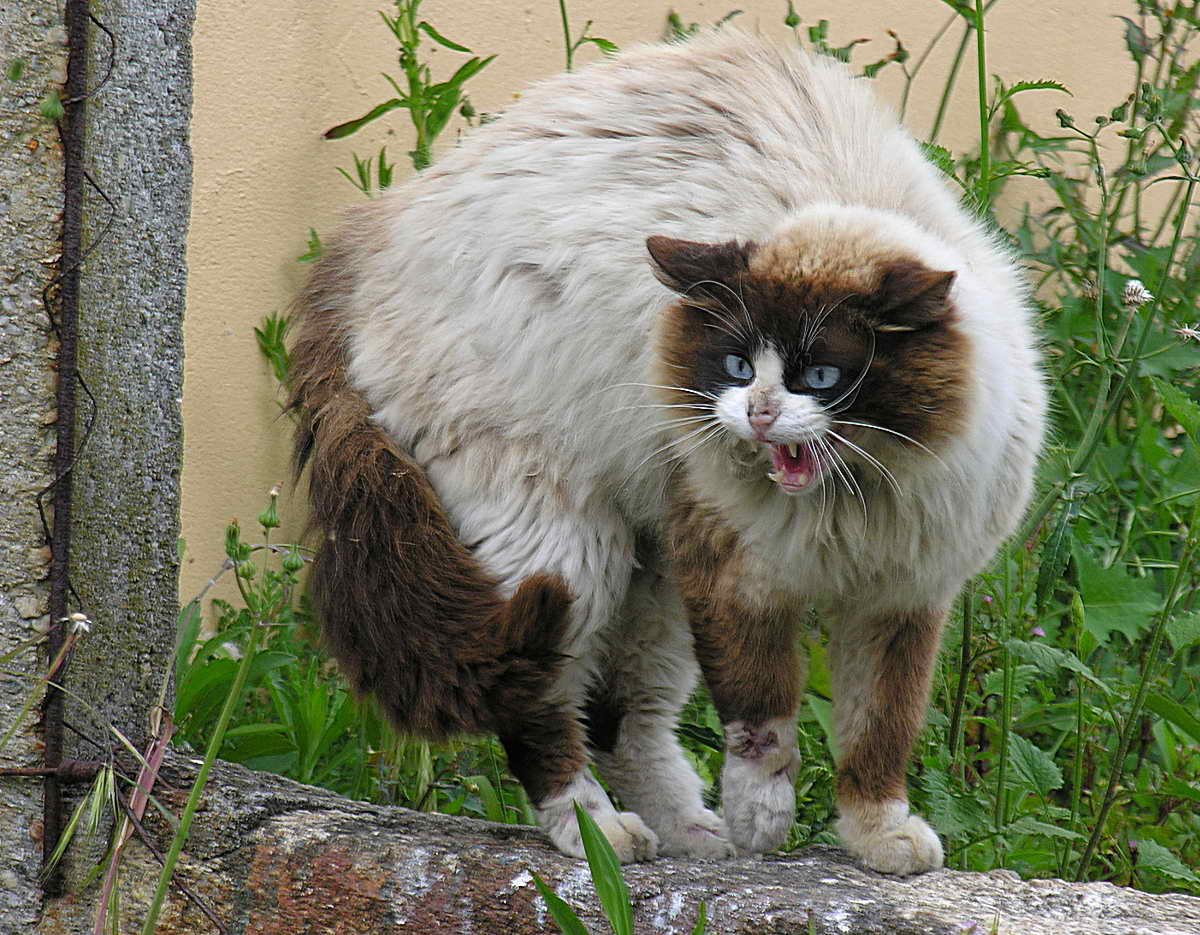Cats are enigmatic creatures, often leaving us wondering about the depths of their emotions. Have you ever pondered whether your feline friend can remember emotional pain? This question is not only intriguing but also opens a window into understanding our beloved pets better. While cats may not verbally communicate their feelings, their behavior often speaks volumes. This article aims to explore the fascinating world of feline memory and emotions, shedding light on whether cats can indeed remember emotional pain.
The Complexity of Feline Emotions
Cats, like humans, possess a wide range of emotions. These emotions are not just limited to happiness or anger; they extend to fear, anxiety, and even depression. Feline emotions are complex and can be affected by various factors such as their environment, interactions with humans, and experiences. Understanding these emotions is crucial to determining whether cats can remember emotional pain. Just like humans, cats can form emotional bonds and experiences that shape their behavior and reactions over time.
The Science Behind Cat Memory

Delving into the science of memory, cats have both short-term and long-term memory capabilities. Short-term memory allows them to remember things for a brief period, while long-term memory stores information for extended periods. This ability to store memories can influence their behavior and reactions, especially if they associate certain experiences with emotional pain. Studies suggest that cats can remember people, places, and events, which indicates that emotional experiences may also be retained in their memory.
Signs of Emotional Pain in Cats
Identifying emotional pain in cats can be challenging, as they often mask their feelings. However, there are telltale signs that can help you determine if your cat is experiencing emotional distress. Changes in behavior, such as increased aggression, withdrawal, or changes in eating habits, can indicate emotional pain. Additionally, excessive grooming or vocalization may also be signs of underlying emotional issues. Being observant and recognizing these signs can help you address your cat’s emotional needs.
Can Cats Experience Trauma?
Just like humans, cats can experience trauma from various events, such as abuse, neglect, or sudden changes in their environment. Trauma can leave a lasting impact on their emotional well-being and behavior. A cat that has experienced trauma may exhibit fear or anxiety in situations that remind them of the traumatic event. Understanding the potential for trauma in cats is essential in assessing whether they can remember emotional pain.
The Role of Human Interaction
Human interaction plays a significant role in a cat’s emotional health. Positive interactions can strengthen the bond between a cat and its owner, fostering trust and security. Conversely, negative interactions, such as punishment or neglect, can lead to emotional pain and impact a cat’s memory. The way we interact with our feline companions can leave lasting impressions, influencing their emotional state and behavior over time.
Memory and Behavioral Changes
Cats’ memories can influence their behavior, especially when it comes to emotional experiences. A cat that associates certain actions or situations with emotional pain may exhibit behavioral changes. For example, a cat that has been mistreated may become fearful or aggressive in similar situations. These behavioral changes can be linked to their memory of past experiences, highlighting the potential for cats to remember emotional pain.
The Impact of Environment on Emotional Memory
The environment in which a cat lives can significantly impact their emotional memory. A stable and nurturing environment can promote positive emotional experiences, while a stressful or chaotic environment can contribute to negative emotional memories. Cats are sensitive creatures, and their surroundings play a crucial role in shaping their emotional well-being. Providing a safe and comforting environment can help minimize emotional pain and promote positive memories.
Understanding Feline Body Language

Cats communicate through body language, which can provide insights into their emotional state. Observing your cat’s body language can help you understand if they are experiencing emotional pain. Signs such as flattened ears, dilated pupils, or a tense body posture can indicate fear or anxiety. By paying attention to these subtle cues, you can better understand your cat’s emotions and address any potential emotional pain they may be experiencing.
The Importance of Routine and Stability
Routine and stability are essential for a cat’s emotional well-being. Cats thrive on predictability, and disruptions to their routine can cause stress and emotional distress. Maintaining a consistent routine can help prevent emotional pain and promote a sense of security. By providing a stable environment, you can help your cat develop positive emotional memories and reduce the likelihood of emotional pain.
Can Cats Forgive and Forget?
The concept of forgiveness in cats is complex. While cats may not forgive in the same way humans do, they can move past negative experiences with time and positive reinforcement. Building trust and providing positive experiences can help a cat overcome emotional pain and form new, positive memories. However, some cats may have a more challenging time letting go of past emotional pain, depending on the severity of their experiences.
The Role of Socialization in Emotional Memory
Socialization plays a crucial role in a cat’s emotional development. Early socialization can help cats form positive associations with people and other animals, reducing the likelihood of emotional pain. Cats that are well-socialized are more likely to adapt to new situations and form positive emotional memories. Encouraging socialization from a young age can help prevent emotional pain and promote a healthy emotional state.
How to Help a Cat Heal from Emotional Pain
If you suspect your cat is experiencing emotional pain, there are steps you can take to help them heal. Providing a safe and nurturing environment, along with positive reinforcement, can help your cat recover from emotional distress. Patience and understanding are key, as healing from emotional pain can take time. Building trust and providing consistent care can help your cat form new, positive emotional memories.
The Connection Between Physical and Emotional Pain
Physical pain and emotional pain are often interconnected in cats. A cat experiencing physical discomfort may also exhibit signs of emotional distress. Addressing any underlying medical issues is crucial to ensuring your cat’s overall well-being. By managing physical pain, you can help alleviate emotional pain and improve your cat’s quality of life.
The Role of Play in Emotional Healing
Play is an essential part of a cat’s emotional well-being. Engaging in play can help reduce stress and promote positive emotional experiences. Playtime provides an opportunity for cats to express themselves and form positive associations with their environment. By incorporating play into your cat’s routine, you can help them heal from emotional pain and form new, positive memories.
Understanding the Limitations of Feline Memory
While cats possess impressive memory capabilities, there are limitations to their memory retention. Cats may not remember every detail of an experience, but they can retain emotional associations. Understanding these limitations can help you better address your cat’s emotional needs and provide the support they require to overcome emotional pain.
The Influence of Age on Emotional Memory
A cat’s age can influence their ability to remember emotional pain. Younger cats may be more adaptable and able to move past negative experiences, while older cats may have a more challenging time. Age-related cognitive changes can impact a cat’s memory and emotional state. Being aware of these age-related factors can help you better support your cat’s emotional well-being.
The Role of Nutrition in Emotional Health
Nutrition plays a vital role in a cat’s overall health, including their emotional well-being. A balanced diet can support cognitive function and promote positive emotional experiences. Ensuring your cat receives proper nutrition can help prevent emotional pain and support their memory and emotional health.
The Power of Positive Reinforcement
Positive reinforcement is a powerful tool in shaping a cat’s behavior and emotional state. Rewarding positive behavior can help form positive associations and reduce emotional pain. By using positive reinforcement, you can help your cat develop new, positive emotional memories and improve their overall well-being.
The Future of Feline Emotional Research
The study of feline emotions and memory is an evolving field. As research continues, we may gain a deeper understanding of how cats experience and remember emotional pain. This knowledge can help us better care for our feline companions and address their emotional needs effectively.
In conclusion, the question of whether cats can remember emotional pain is complex and multifaceted. While cats may have limitations in memory retention, their ability to form emotional associations suggests that they can indeed remember emotional pain. Understanding and addressing the emotional needs of our feline friends is essential to ensuring their well-being and happiness.
Hi, I’m Bola, a passionate writer and creative strategist with a knack for crafting compelling content that educates, inspires, and connects. Over the years, I’ve honed my skills across various writing fields, including content creation, copywriting, online course development, and video scriptwriting.
When I’m not at my desk, you’ll find me exploring new ideas, reading books, or brainstorming creative ways to solve challenges. I believe that words have the power to transform, and I’m here to help you leverage that power for success.
Thanks for stopping by, Keep coming to this website to checkout new articles form me. You’d always love it!






